#Artificial Intelligence in Medical Imaging Market
Text
The Artificial Intelligence in Medical Imaging Market in medical imaging in 2023 is US$ 1.02 billion, and is expected to reach US$ 11.62 billion by 2031 at a CAGR of 35.50%.
#Artificial Intelligence in Medical Imaging Market#Artificial Intelligence in Medical Imaging Market Scope#Artificial Intelligence in Medical Imaging Market Trends
0 notes
Text
youtube
Unlocking the Future of AI Video Innovations
AI is revolutionizing how we create, consume, and interact with video content, ushering in a new era filled with endless possibilities. This transformation is not just about better pixels or smoother frame rates; it's about fundamentally changing the relationship between humans and machines.
With AI, we can now do things with video that were previously unimaginable. The convergence of AI and video has been years in the making, driven by advancements in computing power, access to massive data sets, and breakthroughs in machine learning algorithms. In this video, we delve into how AI algorithms analyze vast amounts of video data to extract meaningful insights and patterns. This enables the creation of personalized video experiences tailored to individual preferences. Additionally, AI automates tedious tasks involved in video production, freeing up human creators to focus on higher-level creative endeavors. The impact of AI on the world of entertainment is already evident as streaming services leverage AI for personalized recommendations so viewers can discover content they'll love. Furthermore, AI enhances video quality by upscaling resolution and even creating realistic deep fakes – synthetic videos convincingly replacing one person's face with another. Join us as we explore these fascinating applications of AI in various industries beyond entertainment such as healthcare and finance. Don't miss out on this insightful journey into the future of intelligent automation and personalization in videos!
Generative AI Links:
DeepBrain AI (Realistic AI Avatars):

Fliki AI (Audio and Video Generator):

Krater AI SuperApp (Digital Content Creation):
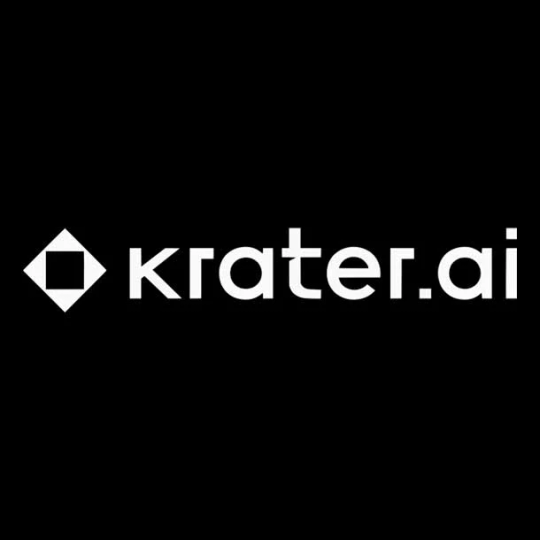
Leonardo AI (Image Generator):

Neural Text AI (Content creation, SEO optimization, and Copywriting):

PodCastle AI: (Pocast Tools for Audio and Video Content Creation)

Rask AI (Language Translator):

Restream AI (Live Stream Digital Content Solution):

Riverside AI (Digital Content Creation - Record Anyone, Anywhere):

SciSpace/Typset AI (Advanced Intuitive Research Tool):

StealthGPT (Digital Content Creator that mimics human writing):

Synthesia AI (Video Generator & Realistic Avatars):

VidIQ (YouTube Tool for Video Marketing, SEO Optimization):

Zebracat AI (Video Generator):

#aicontentgeneration #artificialintelligencerevolution
#AI revolution#neturbiz#Content creation#AI tools#Professional videos#AI technology#Video content#AI-powered tools#Video creation process#Video marketing#Marketing videos#Social media content#Educational materials#Video editor#Drag and drop interface#Text images music#Professional look videos#AI in video IO#Video ideas#Optimize videos#AI-powered video tools#Simplify video creation#Medical diagnoses#Artificial#Intelligence#Creative#Innovations#digital#AI#Youtube
0 notes
Text
Welcome to our YouTube video where we explore the exciting world of artificial intelligence (AI) and its impact on video technology.
AI is revolutionizing how we create, consume, and interact with video content, ushering in a new era filled with endless possibilities.
This transformation is not just about better pixels or smoother frame rates; it's about fundamentally changing the relationship between humans and machines.
With AI, we can now do things with video that were previously unimaginable. The convergence of AI and video has been years in the making, driven by advancements in computing power, access to massive data sets, and breakthroughs in machine learning algorithms. In this video, we delve into how AI algorithms analyze vast amounts of video data to extract meaningful insights and patterns. This enables the creation of personalized video experiences tailored to individual preferences.
Additionally, AI automates tedious tasks involved in video production, freeing up human creators to focus on higher-level creative endeavors. The impact of AI on the world of entertainment is already evident as streaming services leverage AI for personalized recommendations so viewers can discover content they'll love. Furthermore, AI enhances video quality by upscaling resolution and even creating realistic deep fakes – synthetic videos convincingly replacing one person's face with another. Join us as we explore these fascinating applications of AI in various industries beyond entertainment such as healthcare and finance. Don't miss out on this insightful journey into the future of intelligent automation and personalization in videos!
Generative AI Links:
DeepBrain AI (Video Generator):
Fliki AI (Video Generator):
Krater AI (Content Generator):
Leonardo AI (Image Generator):
Murf AI: (Text to Speech):
Podcastle AI(Content Generator):
Rask AI (Language Translator):
Restream AI (Live Streaming):
Riverside AI (Podcast Generator):
SciSpace AI (Research Assistance):
StealthGPT (Undetectable AI):
Synthesia AI (Video Generator):
TubeMagic (Content Optimization):
VidIQ (Content Optimization):
Zebracat AI (Video Generator):
#aicontentgeneration #artificialintelligencerevolution
#AI revolution#Content creation#AI tools#Professional videos#AI technology#Video content#AI-powered tools#Video creation process#Video marketing#Marketing videos#Social media content#Educational materials#Video editor#Drag and drop interface#Text images music#Professional look videos#AI in video IO#Video ideas#Optimize videos#AI-powered video tools#Simplify video creation#AI and creativity#Medical diagnoses#Artificial#Intelligence#Creative#Innovations
0 notes
Text
Global Artificial Intelligence (AI) Enabled Medical Imaging Market Analysis, 2021 research report depicts a deep-dive market analysis of statistics of Global Artificial Intelligence (AI) Enabled Medical Imaging market which consists of regional and country-wise market size, market forecast, CAGR market segmentation, market shares of diverse regions and countries, market share of various end users, applications, product type, technologies, competitive benchmarking, etc.
0 notes
Text
#Artificial Intelligence in Medical Imaging Market Size#Artificial Intelligence in Medical Imaging Market Share#Artificial Intelligence in Medical Imaging Market Trends#Artificial Intelligence in Medical Imaging Market Growth#Artificial Intelligence in Medical Imaging Market Demands#Artificial Intelligence in Medical Imaging Market Opportunities#Artificial Intelligence in Medical Imaging Market scope#Artificial Intelligence in Medical Imaging Market value#Artificial Intelligence in Medical Imaging Market Strategies#Artificial Intelligence in Medical Imaging Market Analysis.
0 notes
Text
Immediate action is needed to tackle the impact of ethnic and other biases in the use of medical devices, an independent review says.
It found pulse oximeter devices could be less accurate for people with darker skin tones, making it harder to spot dangerous falls in oxygen levels.
And it warned devices using artificial intelligence (AI) could under-estimate skin cancer in people with darker skin.
The review said fairer devices needed to be designed urgently.
In total, it made 18 recommendations for improvement. The government says it fully accepts the report's conclusions.
The review was commissioned in 2022 amid mounting concern that ethnic minorities faced greater Covid risks.
It looked closely at three types of device where there is potential for "substantial" harm to patients:
• optical medical devices such as pulse oximeters, which send light waves through a patient's skin to estimate the level of oxygen in the blood. The light can behave differently depending on skin tone
• AI in healthcare
• polygenic risk scores, which combine the results of several genetic tests to help estimate an individual's risk of disease and are used mostly for research purposes
Pulse oximeters were used frequently during the Covid pandemic, for example, alongside other observations, to help judge whether a patient needed hospital admission and treatment.[...]
Chest X-rays
One example is the potential under-diagnosis of skin cancers for people with darker skin.
This would probably be a result of machines being 'trained' predominantly on images of lighter skin tones, the team explains.
Another concern arises when using AI systems for reading chest x-rays - which are mainly trained on images taken of men, who tend to have larger lung capacities.
This could potentially lead to underdiagnosis of heart disease in women, the report suggests, worsening an already long-standing problem.
Call me a fucking extremist but I don't think white people should be building AI and I definitely don't think it should be put in medical devices when the medical industry is already so full of its own systemic bias and especially before there's proper regulations about AI and without more expansive protections for BIPOC in the medical industry.
If you put racist medical device on the market and encourage people to use it knowing it can misdiagnose heart problems and cancer in people with dark skin then they should be able to take you to court for everything youve ever had ¯\_(ツ)_/¯
76 notes
·
View notes
Text
Mastering Neural Networks: A Deep Dive into Combining Technologies
How Can Two Trained Neural Networks Be Combined?
Introduction
In the ever-evolving world of artificial intelligence (AI), neural networks have emerged as a cornerstone technology, driving advancements across various fields. But have you ever wondered how combining two trained neural networks can enhance their performance and capabilities? Let’s dive deep into the fascinating world of neural networks and explore how combining them can open new horizons in AI.
Basics of Neural Networks
What is a Neural Network?
Neural networks, inspired by the human brain, consist of interconnected nodes or "neurons" that work together to process and analyze data. These networks can identify patterns, recognize images, understand speech, and even generate human-like text. Think of them as a complex web of connections where each neuron contributes to the overall decision-making process.
How Neural Networks Work
Neural networks function by receiving inputs, processing them through hidden layers, and producing outputs. They learn from data by adjusting the weights of connections between neurons, thus improving their ability to predict or classify new data. Imagine a neural network as a black box that continuously refines its understanding based on the information it processes.
Types of Neural Networks
From simple feedforward networks to complex convolutional and recurrent networks, neural networks come in various forms, each designed for specific tasks. Feedforward networks are great for straightforward tasks, while convolutional neural networks (CNNs) excel in image recognition, and recurrent neural networks (RNNs) are ideal for sequential data like text or speech.
Why Combine Neural Networks?
Advantages of Combining Neural Networks
Combining neural networks can significantly enhance their performance, accuracy, and generalization capabilities. By leveraging the strengths of different networks, we can create a more robust and versatile model. Think of it as assembling a team where each member brings unique skills to tackle complex problems.
Applications in Real-World Scenarios
In real-world applications, combining neural networks can lead to breakthroughs in fields like healthcare, finance, and autonomous systems. For example, in medical diagnostics, combining networks can improve the accuracy of disease detection, while in finance, it can enhance the prediction of stock market trends.
Methods of Combining Neural Networks
Ensemble Learning
Ensemble learning involves training multiple neural networks and combining their predictions to improve accuracy. This approach reduces the risk of overfitting and enhances the model's generalization capabilities.
Bagging
Bagging, or Bootstrap Aggregating, trains multiple versions of a model on different subsets of the data and combines their predictions. This method is simple yet effective in reducing variance and improving model stability.
Boosting
Boosting focuses on training sequential models, where each model attempts to correct the errors of its predecessor. This iterative process leads to a powerful combined model that performs well even on difficult tasks.
Stacking
Stacking involves training multiple models and using a "meta-learner" to combine their outputs. This technique leverages the strengths of different models, resulting in superior overall performance.
Transfer Learning
Transfer learning is a method where a pre-trained neural network is fine-tuned on a new task. This approach is particularly useful when data is scarce, allowing us to leverage the knowledge acquired from previous tasks.
Concept of Transfer Learning
In transfer learning, a model trained on a large dataset is adapted to a smaller, related task. For instance, a model trained on millions of images can be fine-tuned to recognize specific objects in a new dataset.
How to Implement Transfer Learning
To implement transfer learning, we start with a pretrained model, freeze some layers to retain their knowledge, and fine-tune the remaining layers on the new task. This method saves time and computational resources while achieving impressive results.
Advantages of Transfer Learning
Transfer learning enables quicker training times and improved performance, especially when dealing with limited data. It’s like standing on the shoulders of giants, leveraging the vast knowledge accumulated from previous tasks.
Neural Network Fusion
Neural network fusion involves merging multiple networks into a single, unified model. This method combines the strengths of different architectures to create a more powerful and versatile network.
Definition of Neural Network Fusion
Neural network fusion integrates different networks at various stages, such as combining their outputs or merging their internal layers. This approach can enhance the model's ability to handle diverse tasks and data types.
Types of Neural Network Fusion
There are several types of neural network fusion, including early fusion, where networks are combined at the input level, and late fusion, where their outputs are merged. Each type has its own advantages depending on the task at hand.
Implementing Fusion Techniques
To implement neural network fusion, we can combine the outputs of different networks using techniques like averaging, weighted voting, or more sophisticated methods like learning a fusion model. The choice of technique depends on the specific requirements of the task.
Cascade Network
Cascade networks involve feeding the output of one neural network as input to another. This approach creates a layered structure where each network focuses on different aspects of the task.
What is a Cascade Network?
A cascade network is a hierarchical structure where multiple networks are connected in series. Each network refines the outputs of the previous one, leading to progressively better performance.
Advantages and Applications of Cascade Networks
Cascade networks are particularly useful in complex tasks where different stages of processing are required. For example, in image processing, a cascade network can progressively enhance image quality, leading to more accurate recognition.
Practical Examples
Image Recognition
In image recognition, combining CNNs with ensemble methods can improve accuracy and robustness. For instance, a network trained on general image data can be combined with a network fine-tuned for specific object recognition, leading to superior performance.
Natural Language Processing
In natural language processing (NLP), combining RNNs with transfer learning can enhance the understanding of text. A pre-trained language model can be fine-tuned for specific tasks like sentiment analysis or text generation, resulting in more accurate and nuanced outputs.
Predictive Analytics
In predictive analytics, combining different types of networks can improve the accuracy of predictions. For example, a network trained on historical data can be combined with a network that analyzes real-time data, leading to more accurate forecasts.
Challenges and Solutions
Technical Challenges
Combining neural networks can be technically challenging, requiring careful tuning and integration. Ensuring compatibility between different networks and avoiding overfitting are critical considerations.
Data Challenges
Data-related challenges include ensuring the availability of diverse and high-quality data for training. Managing data complexity and avoiding biases are essential for achieving accurate and reliable results.
Possible Solutions
To overcome these challenges, it’s crucial to adopt a systematic approach to model integration, including careful preprocessing of data and rigorous validation of models. Utilizing advanced tools and frameworks can also facilitate the process.
Tools and Frameworks
Popular Tools for Combining Neural Networks
Tools like TensorFlow, PyTorch, and Keras provide extensive support for combining neural networks. These platforms offer a wide range of functionalities and ease of use, making them ideal for both beginners and experts.
Frameworks to Use
Frameworks like Scikit-learn, Apache MXNet, and Microsoft Cognitive Toolkit offer specialized support for ensemble learning, transfer learning, and neural network fusion. These frameworks provide robust tools for developing and deploying combined neural network models.
Future of Combining Neural Networks
Emerging Trends
Emerging trends in combining neural networks include the use of advanced ensemble techniques, the integration of neural networks with other AI models, and the development of more sophisticated fusion methods.
Potential Developments
Future developments may include the creation of more powerful and efficient neural network architectures, enhanced transfer learning techniques, and the integration of neural networks with other technologies like quantum computing.
Case Studies
Successful Examples in Industry
In healthcare, combining neural networks has led to significant improvements in disease diagnosis and treatment recommendations. For example, combining CNNs with RNNs has enhanced the accuracy of medical image analysis and patient monitoring.
Lessons Learned from Case Studies
Key lessons from successful case studies include the importance of data quality, the need for careful model tuning, and the benefits of leveraging diverse neural network architectures to address complex problems.
Online Course
I have came across over many online courses. But finally found something very great platform to save your time and money.
1.Prag Robotics_ TBridge
2.Coursera
Best Practices
Strategies for Effective Combination
Effective strategies for combining neural networks include using ensemble methods to enhance performance, leveraging transfer learning to save time and resources, and adopting a systematic approach to model integration.
Avoiding Common Pitfalls
Common pitfalls to avoid include overfitting, ignoring data quality, and underestimating the complexity of model integration. By being aware of these challenges, we can develop more robust and effective combined neural network models.
Conclusion
Combining two trained neural networks can significantly enhance their capabilities, leading to more accurate and versatile AI models. Whether through ensemble learning, transfer learning, or neural network fusion, the potential benefits are immense. By adopting the right strategies and tools, we can unlock new possibilities in AI and drive advancements across various fields.
FAQs
What is the easiest method to combine neural networks?
The easiest method is ensemble learning, where multiple models are combined to improve performance and accuracy.
Can different types of neural networks be combined?
Yes, different types of neural networks, such as CNNs and RNNs, can be combined to leverage their unique strengths.
What are the typical challenges in combining neural networks?
Challenges include technical integration, data quality, and avoiding overfitting. Careful planning and validation are essential.
How does combining neural networks enhance performance?
Combining neural networks enhances performance by leveraging diverse models, reducing errors, and improving generalization.
Is combining neural networks beneficial for small datasets?
Yes, combining neural networks can be beneficial for small datasets, especially when using techniques like transfer learning to leverage knowledge from larger datasets.
#artificialintelligence#coding#raspberrypi#iot#stem#programming#science#arduinoproject#engineer#electricalengineering#robotic#robotica#machinelearning#electrical#diy#arduinouno#education#manufacturing#stemeducation#robotics#robot#technology#engineering#robots#arduino#electronics#automation#tech#innovation#ai
3 notes
·
View notes
Text
Top Futuristic AI Based Applications by 2024
2024 with Artificial Intelligence (AI) is the backdrop of what seems to be another revolutionary iteration across industries. AI has matured over the past year to provide novel use cases and innovative solutions in several industries. This article explores most exciting AI applications that are driving the future.
1. Customized Chatbots
The next year, 2024 is seeing the upward trajectory of bespoke chatbots. Google, and OpenAI are creating accessible user-friendly platforms that enable people to build their own small-scale chatbots for particular use cases. These are the most advanced Chatbots available in the market — Capable of not just processing text but also Images and Videos, giving a plethora of interactive applications. For example, estate agents can now automatically create property descriptions by adding the text and images of listings thatsurgent.
2. AI in Healthcare

AI has found numerous applications in the healthcare industry, from diagnostics to personalized treatment plans. After all, AI-driven devices can analyze medical imaging material more accurately than humans and thus among other things help to detect diseases such as cancer at an early stage. They will also describe how AI algorithms are used to create tailored treatment strategies personalized for each patient's genetics and clinical past, which helps enable more precise treatments.
3. Edge AI
A major trend in 2024 is Edge AI It enables computer processing to be done at the edge of a network, rather than in large data centers. Because of its reduced latency and added data privacy, Edge AI can be used in applications like autonomous vehicles transportations, smart cities as well as industrial automation. Example, edge AI in autonomous vehicles is able to get and process real-time data, increasing security by allowing faster decision-making.
4. AI in Finance
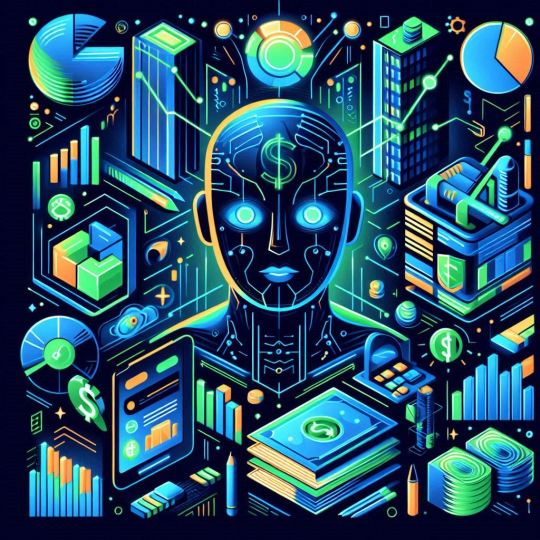
Today, the financial sector is using AI to make better decisions and provide an even stronger customer experience. Fraud detection, risk assessment and customised financial advice have introduced insurance into the AI algorithm. AI-powered chatbots and virtual assistants are now common enough to be in use by 2024, greatly assisting customers stay on top of their financial well-being. Those tools will review your spending behavior, write feedback to you and even help with some investment advices.
5. AI in Education
AI is revolutionizing education with individualized learning. These AI-powered adaptive learning platforms use data analytics to understand how students fare and produces a customised educational content (Hoos, 2017). This way, students get a tailored experience and realize better outcomes. Not only that, AI enabled tools are also in use for automating administrative tasks which shortens the time required by educators on teaching.
6. AI in Job Hunting
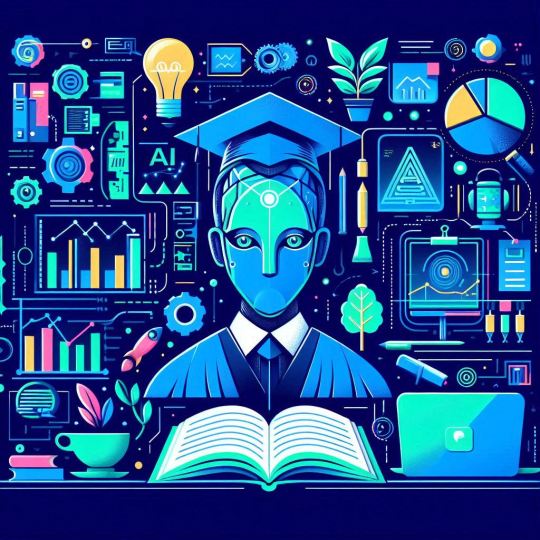
This is also reverberating in the job sector, where AI technology has been trending. With tools like Canyon AI Resume Builder, you can spin the best resumé that might catch something eye catchy recruiter among a dozen others applications he receives in-between his zoom meeting. Using AI based tools to analyze Job Descriptions and match it with the required skills, experience in different job roles help accelerating the chances of a right fit JOB.
7. Artificial Intelligence in Memory & Storage Solutions
Leading AI solutions provider Innodisk presents its own line of memory and storage with added in-house designed AI at the recent Future of Memory & Storage (FMS) 2024 event. Very typically these are solutions to make AI applications easier, faster and better by improving performance scalability as well on the quality. This has huge implications on sectors with substantial data processing and storage demands (healthcare, finance, self-driving cars).
Conclusion

2024 — Even at the edge of possible, AI is revolutionizing across many industries. AI is changing our lives from tailored chatbots and edge AI to healthcare, finance solutions or education and job search. This will not only improve your business profile as a freelancer who create SEO optimized content and write copies but also give your clients in the writing for business niche some very useful tips.
#ai#ai in healthcare#ai in finance#ai in wealth management#ai in business#AI trends#artificial intelligence#advanced technologies#innovation#technological advancements
2 notes
·
View notes
Text

Week in Review
October 23rd-29th
Welcome to Fragile Practice, where I attempt to make something of value out of stuff I have to read.
My future plan is to do longer-form original pieces on interesting topics or trends. For now, I'm going to make the weekly reviews habitual and see if I have any time left.
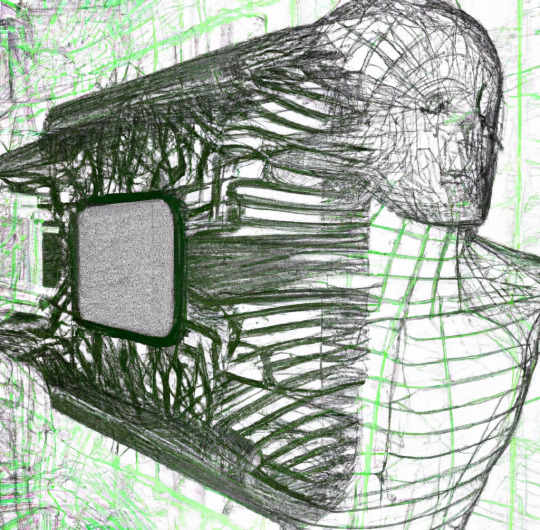
Technology
OpenAI forms team to study ‘catastrophic’ AI risks, including nuclear threats - Tech Crunch; Kyle Wiggers
OpenAI launched a new research team called AI Safety and Security to investigate the potential harms of artificial intelligence focused on AI alignment, AI robustness, AI governance, and AI ethics.
Note: Same energy as “cigarette company funds medical research into smoking risks”.
Artists Allege Meta’s AI Data Deletion Request Process Is a ‘Fake PR Stunt’ - Wired; Kate Knibbs
Artists who participated in Meta’s Artificial Intelligence Artist Residency Program accused the company of failing to honor their data deletion requests and claim that Meta used their personal data to train its AI models without their consent.
Note: Someday we will stop being surprised that corporate activities without obvious profit motive are all fake PR stunts.
GM and Honda ditch plan to build cheaper electric vehicles - The Verge; Andrew J. Hawkins
General Motors and Honda cancel their joint venture to develop and produce cheaper electric vehicles for the US market, citing the chip shortage, rising costs of battery materials, and the changing market conditions.
Note: What are the odds this isn’t related to the 7 billion dollars the US government announced to create hydrogen hubs.
'AI divide' across the US leaves economists concerned - The Register; Thomas Claburn
A new study by economists from Harvard University and MIT reveals a significant gap in AI adoption and innovation across different regions in the US.
The study finds that AI usage is highest in California's Silicon Valley and the San Francisco Bay Area, but was also noted in Nashville, San Antonio, Las Vegas, New Orleans, San Diego, and Tampa, as well as Riverside, Louisville, Columbus, Austin, and Atlanta.
Nvidia to Challenge Intel With Arm-Based Processors for PCs - Bloomberg; Ian King
Nvidia is using Arm technology to develop CPUs that would challenge Intel processors in PCs, and which could go on sale as soon as 2025.
Note: I am far from an NVIDIA fan, but I’m stoked for any amount of new competition in the CPU space.
New tool lets artists fight AI image bots by hiding corrupt data in plain sight - Engadget; Sarah Fielding
A team at the University of Chicago created Nightshade, a tool that lets artists fight AI image bots by adding undetectable pixels into an image that can alter how a machine-learning model produces content and what that finished product looks like.
Nightshade is intended to protect artists work and has been tested on both Stable Diffusion and an in-house AI built by the researchers.
IBM's NorthPole chip runs AI-based image recognition 22 times faster than current chips - Tech Xplore; Bob Yirka
NorthPole combines the processing module and the data it uses in a two-dimensional array of memory blocks and interconnected CPUs, and is reportedly inspired by the human brain.
NorthPole can currently only run specialized AI processes and not training processes or large language models, but the researchers plan to test connecting multiple chips together to overcome this limitation.
Apple’s $130 Thunderbolt 4 cable could be worth it, as seen in X-ray CT scans - Ars Technica; Kevin Purdy
Note: These scans are super cool. And make me feel somewhat better about insisting on quality cables. A+.

The Shifting Web
On-by-default video calls come to X, disable to retain your sanity - The Register; Brandon Vigliarolo
Video and audio calling is limited to anyone you follow or who is in your address book, if you granted X permission to comb through it.
Calling other users also requires that they’ve sent at least one direct message to you before.
Only premium users can place calls, but everyone can receive them.
Google Search Boss Says Company Invests to Avoid Becoming ‘Roadkill’ - The New York Times; Nico Grant
Google’s senior vice president overseeing search said that he sees a world of threats that could humble his company at any moment.
Google Maps is getting new AI-powered search updates, an enhanced navigation interface and more - Tech Crunch; Aisha Malik
Note: These AI recommender systems are going to be incredibly valuable advertising space. It is interesting that Apple decided to compete with Google in maps but not in basic search, but has so far not placed ads in the search results.
Reddit finally takes its API war where it belongs: to AI companies - Ars Technica; Scharon Harding
Reddit met with generative AI companies to negotiate a deal for being paid for its data, and may block crawlers if no deal is made soon.
Note: Google searches for info on Reddit often seem more effective than searching Reddit itself. If they are unable to make a deal, and Reddit follows through, it will be a legitimate loss for discoverability but also an incredibly interesting experiment to see what Reddit is like without Google.
Bandcamp’s Entire Union Bargaining Team Was Laid Off - 404 Media; Emanuel Maiberg
Bandcamp’s new owner (Songtradr) offered jobs to just half of existing employees, with cuts disproportionately hitting union leaders. Every member of the union’s eight-person bargaining team was laid off, and 40 of the union's 67 members lost their jobs.
Songtradr spokesperson Lindsay Nahmiache claimed that the firm didn’t have access to union membership information.
Note: This just sucks. Bandcamp is rad, and it’s hard to imagine it continuing to be rad after this. I wonder if Epic had ideas for BC that didn’t work out.

Surveillance & Digital Privacy
Mozilla Launches Annual Digital Privacy 'Creep-o-Meter'. This Year's Status: 'Very Creepy' - Slashdot
Mozilla gave the current state of digital privacy a 75.6/100, with 100 being the creepiest.
They measured security features, data collection, and data sharing practices of over 500 gadgets, apps, and cars to come up with their score.
Every car Mozilla tested failed to meet their privacy and security standards.
Note: It would be great if even one auto brand would take privacy seriously.
EPIC Testifies in Support of Massachusetts Data Privacy and Protection Act -Electronic Privacy Information Center (EPIC)
Massachusetts version of ADPPA.
Note: While it may warm my dead heart to see any online privacy protections in law, scrambling to do so in response to generative AI is unlikely to protect Americans in any meaningful way from the surveillance driven form of capitalism we’ve all been living under for decades.
Complex Spy Platform StripedFly Bites 1M Victims - Dark Reading
StripedFly is a complex platform disguised as a cryptominer and evaded detection for six years by using a custom version of EternalBlue exploit, a built-in Tor network tunnel, and trusted services like GitLab, GitHub, and Bitbucket to communicate with C2 servers and update its functionality.
iPhones have been exposing your unique MAC despite Apple's promises otherwise - Ars Technica
A privacy feature which claimed to hide the Wi-Fi MAC address of iOS devices when joining a network was broken since iOS 14, and was finally patched in 17.1, released on Wednesday.
Note: I imagine this bug was reported a while ago, but wasn’t publically reported until the fix was released as a term of apple’s bug bounty program.
What the !#@% is a Passkey? - Electronic Frontier Foundation
Note: I welcome our passkey overlords.
#surveillance#tech#technology#news#ai#generative ai#machine vision#electric vehicles#evs#hydrogen#futurism#Apple#iphone#twitter#bandcamp#labor unions#digital privacy#data privacy#espionage#passkeys
11 notes
·
View notes
Text
How Artificial Intelligence can both benefit us and affect humans?
The evolution of artificial intelligence (AI) brings both significant benefits and notable challenges to society.
And my opinion about artificial intelligence is that can benefit us but in a certain way it can also affect us.
And you will say why I think that is good because mainly it is because several aspects are going to change and for some things the help you give us will be useful but for other things it is going to screw us up very well.
And now I'm going to tell you some Advantages and some Disadvantages of AI
Benefits:
1. Automation and Efficiency: AI automates repetitive tasks, increasing productivity and freeing humans to focus on more complex and creative work. This is evident in manufacturing, customer service, and data analysis.
2. Healthcare Improvements: AI enhances diagnostics, personalizes treatment plans, and aids in drug discovery. For example, AI algorithms can detect diseases like cancer from medical images with high accuracy.
3. Enhanced Decision Making: AI systems analyze large datasets to provide insights and predictions, supporting better decision-making in sectors such as finance, marketing, and logistics.
4. Personalization: AI personalizes user experiences in areas like online shopping, streaming services, and digital advertising, improving customer satisfaction and engagement.
5. Scientific Research: AI accelerates research and development by identifying patterns and making predictions that can lead to new discoveries in fields like genomics, climate science, and physics.
Challenges:
1. Job Displacement: Automation can lead to job loss in sectors where AI can perform tasks traditionally done by humans, leading to economic and social challenges.
2. Bias and Fairness: AI systems can perpetuate and amplify existing biases if they are trained on biased data, leading to unfair outcomes in areas like hiring, law enforcement, and lending.
3. Privacy Concerns: The use of AI in data collection and analysis raises significant privacy issues, as vast amounts of personal information can be gathered and potentially misused.
4. Security Risks: AI can be used maliciously, for instance, in creating deepfakes or automating cyberattacks, posing new security threats that are difficult to combat.
5. Ethical Dilemmas: The deployment of AI in critical areas like autonomous vehicles and military applications raises ethical questions about accountability and the potential for unintended consequences.
Overall, while the evolution of AI offers numerous advantages that can enhance our lives and drive progress, it also requires careful consideration and management of its potential risks and ethical implications. Society must navigate these complexities to ensure AI development benefits humanity as a whole.
2 notes
·
View notes
Text
Exploring the Latest Breakthroughs in Technology
Introduction
Technology is evolving at a rapid pace, bringing with it groundbreaking innovations that are reshaping our world. From artificial intelligence to renewable energy solutions, these advancements are enhancing our lives in ways we never imagined. In this article, we'll explore some of the most exciting recent breakthroughs in technology that are set to transform various industries and everyday life.
1. Artificial Intelligence and Machine Learning
Artificial Intelligence (AI) and Machine Learning (ML) are at the forefront of technological innovation. AI and ML are being integrated into a myriad of applications, from healthcare diagnostics to personalized marketing. These technologies analyze vast amounts of data to make predictions, automate processes, and provide valuable insights.
AI in Healthcare
AI is revolutionizing healthcare by improving diagnostic accuracy and patient care. Machine learning algorithms can analyze medical images to detect diseases like cancer at early stages, enabling timely treatment and better patient outcomes.
AI in Everyday Life
In our daily lives, AI powers virtual assistants like Siri and Alexa, enhances customer service through chat-bots, and personalizes our online shopping experiences. The continuous improvement of AI algorithms is making these applications smarter and more efficient.
2. Quantum Computing
Quantum Computing promises to solve problems that are currently insurmountable for classical computers. By leveraging the principles of quantum mechanics, quantum computers perform complex calculations at unprecedented speeds.
Advancements in Cryptography
Quantum computing has the potential to revolutionize cryptography by breaking encryption codes that secure our digital communications. This breakthrough necessitates the development of new cryptographic methods to protect sensitive information.
Applications in Drug Discovery
In the pharmaceutical industry, quantum computing can simulate molecular interactions at a granular level, accelerating the drug discovery process and leading to the development of new, effective medications.
3. Renewable Energy Technologies
The shift towards renewable energy technologies is crucial in combating climate change. Innovations in solar, wind, and battery technologies are making renewable energy more efficient and accessible.
Solar and Wind Energy
Recent advancements in solar panel efficiency and wind turbine design are increasing the amount of energy harvested from natural sources. These improvements are making renewable energy a viable alternative to fossil fuels.
Energy Storage Solutions
Enhanced battery technologies are crucial for storing renewable energy, ensuring a consistent power supply even when the sun isn't shining or the wind isn't blowing. Breakthroughs in battery capacity and lifespan are driving the adoption of renewable energy systems.
4. Internet of Things (IoT)
The Internet of Things (IoT) connects devices and systems, enabling them to communicate and share data. This connectivity is transforming homes, industries, and cities into smarter, more efficient environments.
Smart Homes
IoT technology is making homes smarter by automating lighting, heating, and security systems. Smart home devices can be controlled remotely, offering convenience and energy savings.
Industrial IoT
In industrial settings, IoT devices monitor equipment health and optimize manufacturing processes. Predictive maintenance enabled by IoT sensors can reduce downtime and improve efficiency.
5. Blockchain Technology
Blockchain is revolutionizing how we handle transactions and data security. This decentralized ledger technology ensures transparency and security in various applications.
Financial Transactions
Blockchain is streamlining financial transactions by eliminating the need for intermediaries. It provides a secure and transparent way to transfer funds and verify transactions.
Supply Chain Management
In supply chains, blockchain offers traceability and transparency, reducing fraud and ensuring the authenticity of products. This technology is particularly beneficial in industries like pharmaceuticals and food.
6. 5G Technology
The roll-out of 5G technology is set to enhance connectivity with faster speeds and lower latency. This advancement will support the growth of IoT, autonomous vehicles, and smart cities.
Enhanced Mobile Connectivity
5G technology promises to improve mobile experiences with seamless streaming and quick downloads. It will also enable new applications in virtual and augmented reality.
Smart Cities
5G will facilitate the development of smart cities, where real-time data exchange enhances urban management systems, traffic control, and emergency services.
7. Autonomous Vehicles
Autonomous vehicles are set to transform transportation. Advances in AI and sensor technology are bringing self-driving cars closer to reality, offering safer and more efficient travel options.
Safety and Efficiency
Autonomous vehicles can reduce accidents caused by human error and optimize traffic flow, reducing congestion and emissions. They hold the potential to revolutionize the logistics and delivery sectors.
Delivery Services
Self-driving delivery vehicles and drones are making logistics faster and more reliable. These innovations are particularly beneficial in urban areas, where they can reduce traffic and pollution.
8. Biotechnology
Biotechnology is advancing rapidly, offering solutions in healthcare, agriculture, and environmental management. Innovations in gene editing, synthetic biology, and bio-engineering are opening new possibilities.
Gene Editing
CRISPR technology is enabling precise gene editing, offering potential cures for genetic diseases and innovations in agriculture. This technology is paving the way for new treatments and sustainable farming practices.
Synthetic Biology
Synthetic biology is creating new biological systems and organisms, leading to advancements in medicine, bio-fuels, and sustainable materials. This field holds promise for addressing global challenges such as disease and climate change.
9. Augmented Reality (AR) and Virtual Reality (VR)
AR and VR technologies are providing immersive experiences in entertainment, education, and various professional fields. These technologies are creating new ways to interact with digital content.
Gaming and Entertainment
AR and VR are enhancing gaming experiences by creating immersive environments and interactive game-play. These technologies are also being used in movies and virtual concerts, offering new forms of entertainment.
Professional Training
In education and professional training, AR and VR offer realistic simulations for hands-on learning. Fields like medicine, engineering, and aviation benefit from these technologies by providing safe and effective training environments.
Conclusion
The latest breakthroughs in technology are driving significant changes across various sectors. From AI and quantum computing to renewable energy and autonomous vehicles, these innovations are shaping the future and improving our lives. Staying informed about these developments is crucial for individuals and businesses alike to leverage the benefits of these technological advancements. As we look to the future, these game-changing technologies will continue to evolve, offering new opportunities and solutions to the challenges we face.
#technology#artificial intelligence#virtual reality#immersive technology#renewableenergy#ai algorithm#valuable insights#internet of things#technological advancements
2 notes
·
View notes
Text
The Artificial Intelligence in Medical Imaging Market in medical imaging in 2023 is US$ 1.02 billion, and is expected to reach US$ 11.62 billion by 2031 at a CAGR of 35.50%.
#Artificial Intelligence in Medical Imaging Market#Artificial Intelligence in Medical Imaging Market Size#Artificial Intelligence in Medical Imaging Market Share
0 notes
Text
Healthcare Industry with Custom AI Software Development - SSTech System
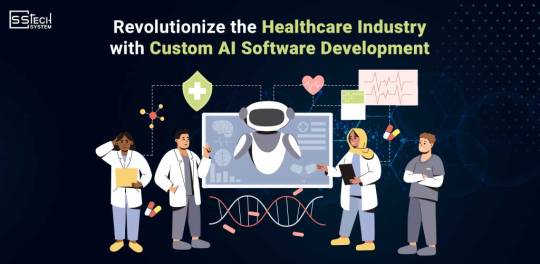
We are living in an era of technology. By glancing around, it is obvious that technology has affected every inch of our lives. Artificial Intelligence (AI) is the contemporary technological trend. It is reshaping the entire landscape. Healthcare is no exception. AI Software Development of today is having a great influence on how medical care is delivered nowadays.
AI-driven web development has brought a very important change in the way patients are diagnosed. It has not only changed the way doctors diagnose and treat patients but also how patients manage their health. Custom AI software development truly has been revolutionized as the game-changer. It also provides a good foundation for creativity and saving.
Would you like to find out about the ways AI is transforming the healthcare sector?If yes, read on! In this article, we are going to expose the way AI is changing healthcare.
AI & Healthcare Web Development
AI in Healthcare can be a very effective option of efficient healthcare. It can empower the healthcare sector more than ever before. It improves medical outcomes. This adds to the fact that it improves operations and results in cost and time savings. Well, it is not just a passing fad, but it is a trend that will remain forever.
According to data, the worldwide AI market is poised for remarkable growth. It is set to grow at an anticipated compound annual growth rate (CAGR) of 37.3% between 2023 and 2030. By 2023, it is expected to soar to a staggering $1,811.8 billion, showcasing the immense potential and rapid expansion of the AI industry.
With the emergence of AI, healthcare businesses are quickly shifting to custom AI software. It empowers them to make the best of the power of AI tailored. They can tailor the solutions as per their unique requirements.
Are you also planning to level up your healthcare business? If so, AI software development can be beneficial. Wondering how? Let’s move to the next section, where we will tell you some key benefits of custom AI software development.
Benefits Of Custom AI Software Development
AI is growing massively. It has impacted businesses across sectors. If we talk about Healthcare, AI has made things super easy. Below are some key benefits of AI software development:
Enhanced diagnostic accuracy:
Custom AI solutions for your healthcare business enable to make the analysis of large amounts of medical data. It is also able to analyze patient records, laboratory results, and imaging scans.
This however is not the only advantage; AI algorithms are also able to uncover patterns. Moreover, it can recognize abnormalities which human eyes may miss. Generally, this brings about better diagnoses and prompts treatment.
Personalized treatment plans:
AI-driven insights assist healthcare professionals in the creation of individualized treatment plans. They may personalize medical solutions to patients’ needs. It harnesses patient data, genetic information, and treatment history. It assists in suggesting tailored strategies.
Improved operational efficiency:
AI-enabled automation decreases clerical duties. For instance, it assists with appointment scheduling, billing, and inventory management. Thus, they can devote more time to patient care. It also helps in the integration of AI into the existing workflow. It will increase efficiency and productivity in the organization as a whole.
Predictive analytics:
AI has the superior predictive power. Developing AI healthcare software can pre-empt disease outbreaks, anticipate bed demand, and identify high-risk patients. It allows for proactive planning and resource allocation. AI algorithms can furnish strategic decision-makers with actionable insights to guide strategic decision-making and resource planning.
Enhanced patient engagement:
AI-driven chatbots and virtual assistants are always on standby to extend support to patients. It answers their questions anytime. Moreover, it provides medication reminders, as well as tailored health suggestions. You can hence build an AI chatbot and integrate it into websites and applications.
We have seen how AI can improve healthcare. However, are you aware of the common AI applications in the healthcare industry? Let’s find out!
Custom AI Solutions for Healthcare
AI can be used in multiple ways. Here, we have listed down some typical custom AI solutions in the medical industry:
AI-enabled diagnostics:
Custom AI algorithms can analyze medical images. It helps radiologists in X-rays, MRIs, and CT scans in detecting abnormalities and identifying disease. AI-powered diagnostic tools offer rapid and accurate results.
Predictive analytics:
Custom AI models can analyze electronic health records (EHRs). It also allows for demographic data, and environmental factors to predict disease trends, identify at-risk populations. With predictive analytics, healthcare providers can intervene proactively.
Remote patient monitoring:
Custom AI software enables remote monitoring of patients with chronic conditions. AI algorithms can analyze real-time data from wearable devices, sensors, and IoT devices to detect deviations from normal parameters and alert healthcare providers to potential issues. It enables timely interventions and preventing complications.
Drug discovery and development:
Custom AI solutions accelerate the drug discovery process by analyzing vast datasets, simulating molecular interactions, and predicting drug efficacy and safety profiles. AI-driven drug discovery platforms expedite the identification of promising drug candidates, reducing costs and time-to-market for new therapies.
AI Software Development Tools
Well! When it comes to AI software development tools, you get a variety of options. Here, we have noted the most important tools that can make a positive difference for your business:
Machine learning libraries:
Tools such as TensorFlow, PyTorch, and sci-kit-learn provide potent frameworks for developing custom AI models tailored to healthcare applications. These libraries offer a wide range of machine-learning algorithms and tools for data preprocessing, model training, and evaluation.
Natural language processing (NLP) tools:
NLP frameworks like spaCy and NLTK enable the development of AI-driven chatbots and virtual assistants for healthcare applications. These tools support text processing, sentiment analysis, and language understanding, facilitating the creation of conversational interfaces for patient engagement and support.
Deep learning platforms:
Deep learning frameworks such as Keras and MXNet offer advanced capabilities for developing custom AI models, including convolutional neural networks (CNNs), recurrent neural networks (RNNs), and generative adversarial networks (GANs). These platforms empower healthcare organizations to leverage state-of-the-art deep learning techniques for image analysis, natural language processing, and predictive modelling.
Custom AI software development has become crucial for businesses. Professional AI/ML developer helps in unlocking the full potential of AI by providing the best-in-class custom healthcare software development services for the healthcare industry.
With AI revolution in healthcare lets you enhance diagnostic accuracy, personalize treatment plans, improve operational efficiency, and empower patients to take control of their health. SSTech System a professional AI software development company, the future of Healthcare holds great potential for innovation, efficiency, and improved patient outcomes.
Final words
AI software development services for healthcare are no less than a paradigm shift in medical technology. It allows for a smarter and more efficient way of medical care and healthcare app development. If you are also a healthcare business and looking to integrate AI into your healthcare business, it is time for you to go professional. So what are you waiting for? Hire AI developers today and take your business to new heights.
#AI Solutions for Healthcare#Hire AI developers#AI software development#software development#sstech system#healthcare industry#Custom AI software#Healthcare Web Development#healthcare#b2b
2 notes
·
View notes
Text
Healthcare IT Integration Market Size Expected to Reach USD 11.16 Billion by 2030
The global Healthcare IT Integration market size, which was valued at USD 4.38 billion in 2022, is anticipated to witness remarkable growth, reaching USD 11.16 billion by 2030. This projection reflects a robust Compound Annual Growth Rate (CAGR) of 12.4% over the forecast period spanning from 2023 to 2030.
The increasing demand for efficient healthcare delivery systems, coupled with the rising adoption of electronic health records (EHRs) and other digital solutions, is driving the growth of the Healthcare IT Integration market. Healthcare organizations worldwide are realizing the significance of integrating disparate systems and applications to streamline workflows, improve patient care, and enhance operational efficiency.
Key Market Segments:
The Healthcare IT Integration market is segmented by Products & Services type, End User, and Regions:
Products & Services Type:
Products: Interface Engines, Media Integration Software, Medical Device Integration Software, Other Integration Tools
Services: Support and Maintenance Services, Implementation and Integration Services (Training and Education Services, Consulting Services)
End User:
Hospitals
Clinics
Diagnostic Imaging Centers
Laboratories
Other End Users
Regions: The global market forecast covers various regions across the globe.
Market Outlook:
The increasing adoption of electronic health records (EHRs) and healthcare information exchange (HIE) solutions is propelling the demand for Healthcare IT Integration products and services. Interface engines and integration software play a pivotal role in connecting disparate systems within healthcare organizations, enabling seamless data exchange and interoperability.
Moreover, the emergence of advanced technologies such as artificial intelligence (AI), machine learning (ML), and blockchain in healthcare is further driving the need for robust IT integration solutions. These technologies require seamless integration with existing healthcare IT infrastructure to harness their full potential in improving patient outcomes and optimizing healthcare processes.
As healthcare providers continue to prioritize interoperability and data exchange to support value-based care initiatives and enhance patient engagement, the demand for Healthcare IT Integration solutions is expected to witness significant growth in the coming years.
2 notes
·
View notes
Text
Unleashing Gen AI: A Revolution in the Audio-Visual Landscape
Artificial Intelligence (AI) has consistently pushed the boundaries of what is possible in various industries, but now, we stand at the brink of a transformative leap: Generative AI, or Gen AI. Gen AI promises to reshape the audio-visual space in profound ways, and its impact extends to a plethora of industries. In this blog, we will delve into the essence of Gen AI and explore how it can bring about a sea change in numerous sectors.
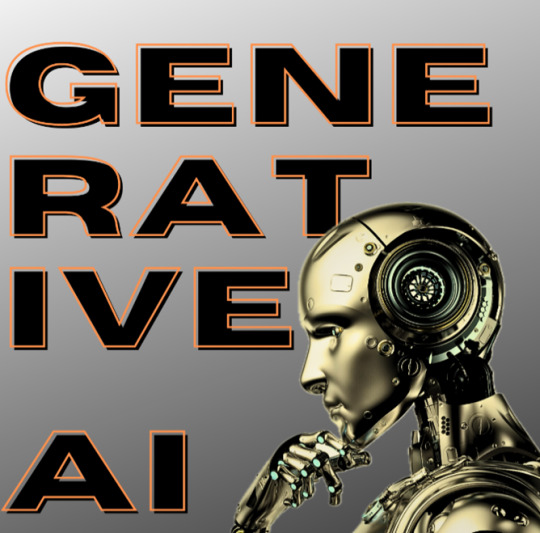
Decoding Generative AI (Gen AI)
Generative AI is the frontier of AI where machines are capable of creating content that is remarkably human-like. Harnessing neural networks, particularly Recurrent Neural Networks (RNNs) and Generative Adversarial Networks (GANs), Gen AI can generate content that is not just contextually accurate but also creatively ingenious.
The Mechanics of Gen AI
Gen AI operates by dissecting and imitating patterns, styles, and structures from colossal datasets. These learned insights then fuel the creation of content, whether it be music, videos, images, or even deepfake simulations. The realm of audio-visual content is undergoing a monumental transformation courtesy of Gen AI.
Revolutionizing the Audio-Visual Realm
The influence of Generative AI in the audio-visual sphere is profound, impacting several dimensions of content creation and consumption:
1. Musical Masterpieces:
Gen AI algorithms have unlocked the potential to compose music that rivals the creations of human composers. They can effortlessly dabble in diverse musical genres, offering a treasure trove of opportunities for musicians, film score composers, and the gaming industry. Automated music composition opens the doors to boundless creative possibilities.
2. Cinematic Magic:
In the world of film production, Gen AI can conjure up realistic animations, special effects, and entirely synthetic characters. It simplifies video editing, making it more efficient and cost-effective. Content creators, filmmakers, and advertisers are poised to benefit significantly from these capabilities.
3. Artistic Expression:
Gen AI is the artist's secret tool, generating lifelike images and artworks. It can transform rudimentary sketches into professional-grade illustrations and graphics. Industries like fashion, advertising, and graphic design are harnessing this power to streamline their creative processes.
4. Immersive Reality:
Gen AI plays a pivotal role in crafting immersive experiences in virtual and augmented reality. It crafts realistic 3D models, environments, and textures, elevating the quality of VR and AR applications. This technological marvel has applications in gaming, architecture, education, and beyond.
Industries Set to Reap the Rewards
The versatile applications of Generative AI are a boon to numerous sectors:
1. Entertainment Industry:
Entertainment stands as a vanguard in adopting Gen AI. Film production, music composition, video game development, and theme park attractions are embracing Gen AI to elevate their offerings.
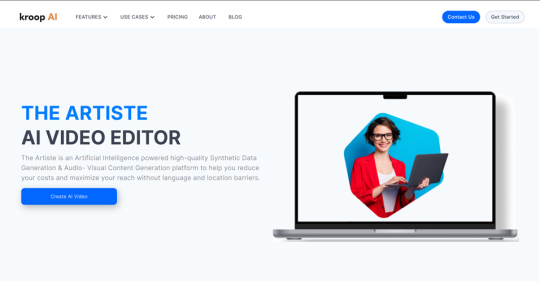
2. Marketing and Advertising:
Gen AI streamlines content creation for marketing campaigns. It generates ad copies, designs visual materials, and crafts personalized content, thereby saving time and delivering more engaging and relevant messages.
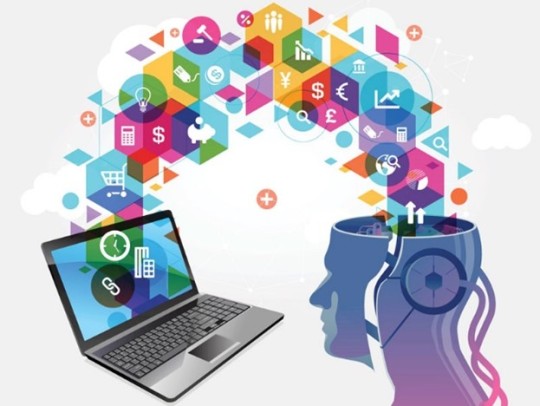
3. Healthcare and Medical Imaging:
In the realm of healthcare, Gen AI enhances medical imaging, aids in early disease detection, and generates 3D models for surgical planning and training.

4. Education:
Gen AI facilitates the creation of interactive learning materials, custom tutoring content, and immersive language learning experiences with its natural-sounding speech synthesis.

5. Design and Architecture:
Architects and designers benefit from Gen AI by generating detailed blueprints, 3D models, and interior design concepts based on precise user specifications.

The Future of Gen AI
The journey of Generative AI is far from over, and the future holds promise for even more groundbreaking innovations. However, it is imperative to navigate the ethical and societal implications thoughtfully. Concerns related to misuse, privacy, and authenticity should be addressed, and the responsible development and application of Gen AI must be prioritized.
In conclusion, Generative AI is on the cusp of redefining the audio-visual space, promising an abundance of creative and pragmatic solutions across diverse industries. Embracing and responsibly harnessing the power of Gen AI is the key to ushering these industries into a new era of ingenuity and innovation.
#artificial intelligence#technology#generative ai#audiovisual#future#startup#healthcare#education#architecture#ai#design#entertainment
5 notes
·
View notes
Text
What to Expect from the Tech Industry in 2023: A Look into the Future of Technology

The tech industry has seen tremendous growth and innovation over the past few years, and it looks like this trend isn’t going anywhere anytime soon. In 2023, tech innovation is sure to be at the forefront of conversation, especially when it comes to new technologies. And the pace of innovation is only likely to get racier. What we are discussing today may be completely outdated by the end of 2023. So, what can we expect from the tech industry in 2023? Let’s look.
ChatGBT
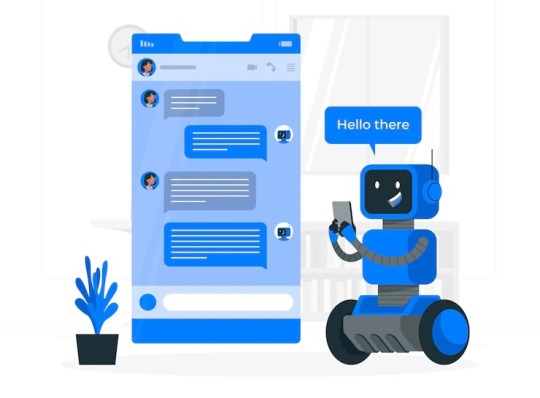
ChatGBT is a chatbot-based AI software that interacts with users in real time. It combines advanced Natural Language Processing (NLP) technology and enhanced algorithms to create natural and engaging conversations. ChatGBT can provide useful customer service functions such as fast issue resolution and recommendation services. ChatGBT also has the ability to automatically generate sophisticated chatbot marketing campaigns with data-driven targeting capabilities. ChatGBT is a powerful tool for modern businesses to increase customer satisfaction and streamline operations, thus making it potentially one of the most disruptive technologies of 2023.
Autonomous Cars

Autonomous cars are driverless vehicles that can navigate roads on their own without any human intervention. While these vehicles are still being tested today, they are expected to become commonplace by the second quarter of 2023. Autonomous cars have the potential to revolutionize transportation, making it quicker, safer, and more efficient than ever before.
Artificial Intelligence (AI)
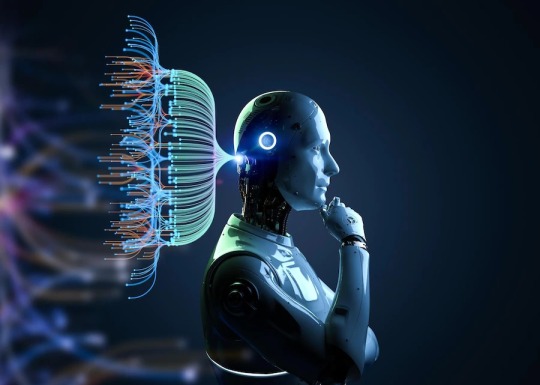
AI is another topic that will likely dominate tech discussions for years. It is set to make huge and visible advancements specifically in the coming three years. And AI-assisted applications are predicted to become widely available and used in a variety of sectors ranging from media to manufacturing and banking to hospitality.
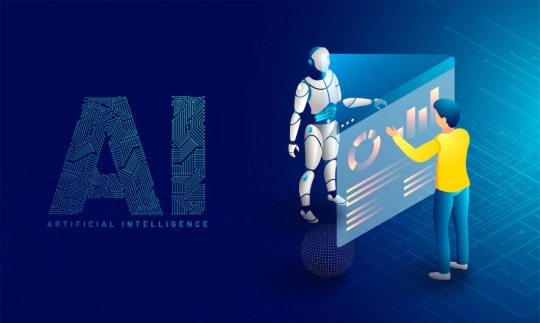
AI involves machines performing tasks that would normally require human intelligence such as decision-making or problem-solving. It has already made its way into many aspects of our lives including healthcare, finance, education, and more. It is only expected to become even more widespread and powerful in 2023.
Tech in the Routine Employee Nurturing Space

AI and ML-based content and image-creating sites have been around for a year or two. But with further advances in both AI and ML technologies, they are quickly becoming an everyday part of the creative process for many people. AI-content creation sites and apps allow users to quickly and easily create AI-generated content tailored specifically to their needs. Additionally, AI-generated images, from landscapes to photographs, can help bring depth and life to projects. This type of AI-generated content is already helping industries such as advertising, marketing, and entertainment by providing them with quick and easy options for creating visually appealing projects. AI and ML is also creating a buzz in the employee engagement space with a few innovative companies like Hubengage integrating the tech into their employee app solutions.
Cybersecurity

As technology becomes more advanced, so does the need for greater cybersecurity measures. Cybersecurity is an essential part of digital operations as hackers become increasingly sophisticated in their methods of attack. Cybersecurity measures should be updated regularly to ensure that all data remains safe and secure from malicious actors online.
Robotics

In recent years, robots have become increasingly commonplace in a variety of industries. Since robotics automates mundane tasks and frees up time for employees, it allows them to focus on more complex projects. Additionally, robotics can also reduce costs associated with human labor.
From factory production lines to medical procedures, robots are quickly becoming an essential part of our lives; and it is poised to make great strides in the coming years as more companies and organizations explore its potential.

The healthcare industry is one area where robotics has seen significant growth in recent years. Robots have allowed doctors and nurses to perform operations with greater precision and accuracy than ever before, resulting in improved patient outcomes.

Automakers too are using robotic technology to increase safety and reduce manufacturing costs. Furthermore, advances in artificial intelligence (AI) will allow robots to learn from their mistakes and become even more efficient over time. So, 2023 looks set to be an exciting year for robotics!
Biotech and Genomics
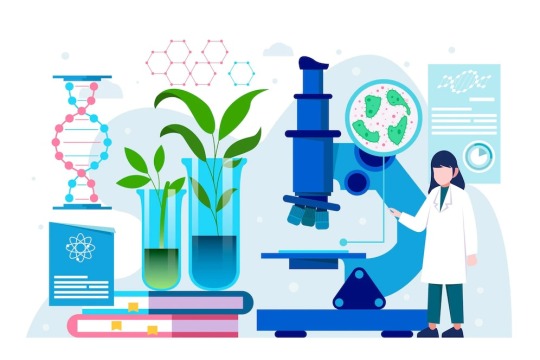
In 2023 biotechnology and genomics are also likely to be the trending topics in tech innovation. This is largely due to advances in technology that enable further development of biotechnology and genomics. Companies have already invested heavily in biotechnology products and genetic editing, so continued expansion and improvement of these technologies are highly probable as funding increases. With growing interest surrounding biotechnology, initiatives such as CRISPR-Cas9 open up a once-impossible avenue for efficient gene editing research. It is expected that biotechnological breakthroughs will benefit the medical field more than ever before, from diagnosis and treatments to cures for a variety of diseases. As such, biotechnology and genomics are poised to shift the future of humanity.
Conclusion:
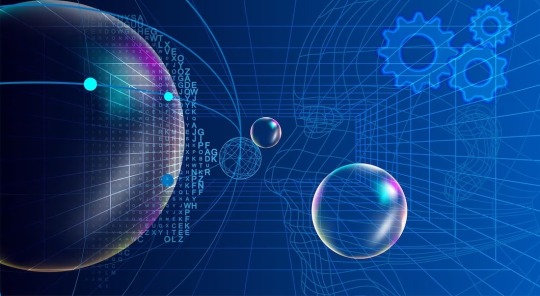
As we edge towards 2030, technology trends and innovations will no doubt come into play in changing our daily lives in ways both big and small. Additionally, 5G networks are providing us with lightning-fast connections and enabling numerous advances, particularly in tech innovations. 2023 could be a transformative year for both consumers and businesses alike as technology continues its rapid development cycle with no signs of slowing down anytime soon. Autonomous cars, artificial intelligence (AI), and cybersecurity are just a few topics that are sure to dominate tech discussions over the next few years as these technologies continue their evolution toward becoming widely adopted tools across industries worldwide. It’s an exciting time for those interested in technology. How happy your employees are, now technology will tell. So, make sure you stay up to date on these topics if you want your business or organization to remain competitive against its rivals!
#techinnovation#technovation#techtrends#techtrendsin2023#technologyin2023#employeetech#technologyinemployeeexperience
9 notes
·
View notes